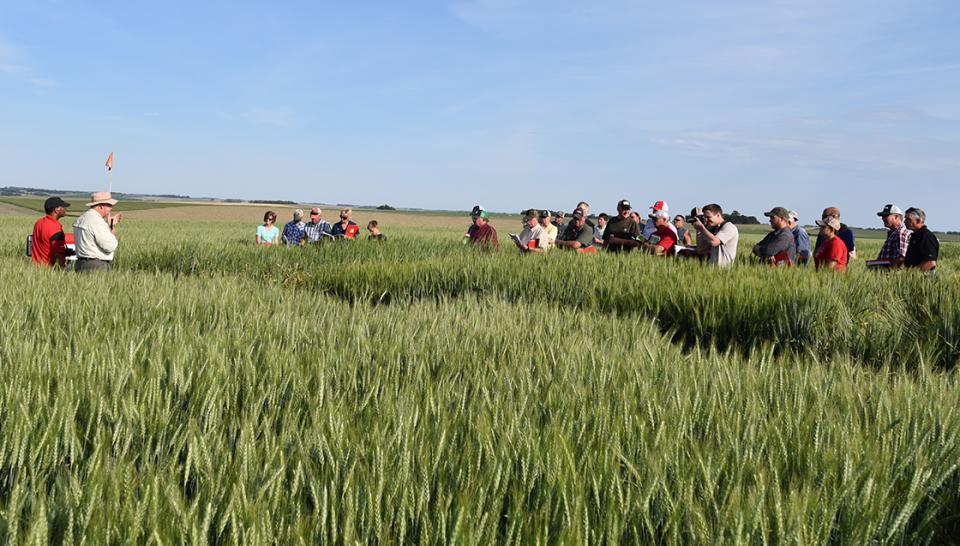
Wheat Disease Update: Stripe Rust, Leaf Rust, Wheat Streak Mosaic at High Levels
Field surveys June 1-8 in south central, southeast, and northeast Nebraska showed stripe rust and leaf rust have developed to severe levels in fields planted with susceptible varieties that were not sprayed with fungicide to protect the flag leaf. In a state variety trial in a grower’s field (Figure 1) in Washington County on June 6, stripe rust was the predominant disease.


Further south at the Agricultural Research and Development Center near Mead (Saunders County) and at the Havelock Research Farm near Lincoln (Lancaster County), stripe rust was severe in susceptible lines/varieties and leaf rust was severe (Figure 2) in varieties/lines resistant to stripe rust but susceptible to leaf rust.
On June 7 stripe rust in a grower’s field in Webster County (featured in the May 26 issue of CropWatch) had progressed to 70-100% severity on flag leaves (Figure 3) and had killed all leaves in large sections of the field.




On June 1, severe wheat streak mosaic, a virus disease, was observed in a grower’s field in Jefferson County (Figure 4). There are reports of severe and widespread wheat streak mosaic in the southern Panhandle with 100% loss in some fields.
Damage to wheat heads by diseases, insects, or environmental factors has also been observed. Trace to low levels of Fusarium head blight (Figure 5) and trace levels of wheat stem maggot damage (Figure 6) and stunting and whitening of heads caused by take-all (Figure 7) were observed during the disease surveys. Fusarium head blight was observed in Nuckolls and Jefferson counties on June 7, in research plots at the Agricultural Research and Development Center near Mead on June 3, and at the Havelock Research Farm on June 5.
Management
It is too late to spray for stripe rust, leaf rust, or Fusarium head blight. Virus diseases cannot be controlled once they occur. To lessen the risk for wheat streak mosaic in the next cropping cycle, control volunteer wheat this summer before planting in the fall.
Wheat Field Days
Six more Winter Wheat Field Days are scheduled for this month and offer growers the opportunity to compare performance of wheat varieties and resistance traits.
Field Day Schedule
Online Master of Science in Agronomy
With a focus on industry applications and research, the online program is designed with maximum flexibility for today's working professionals.
